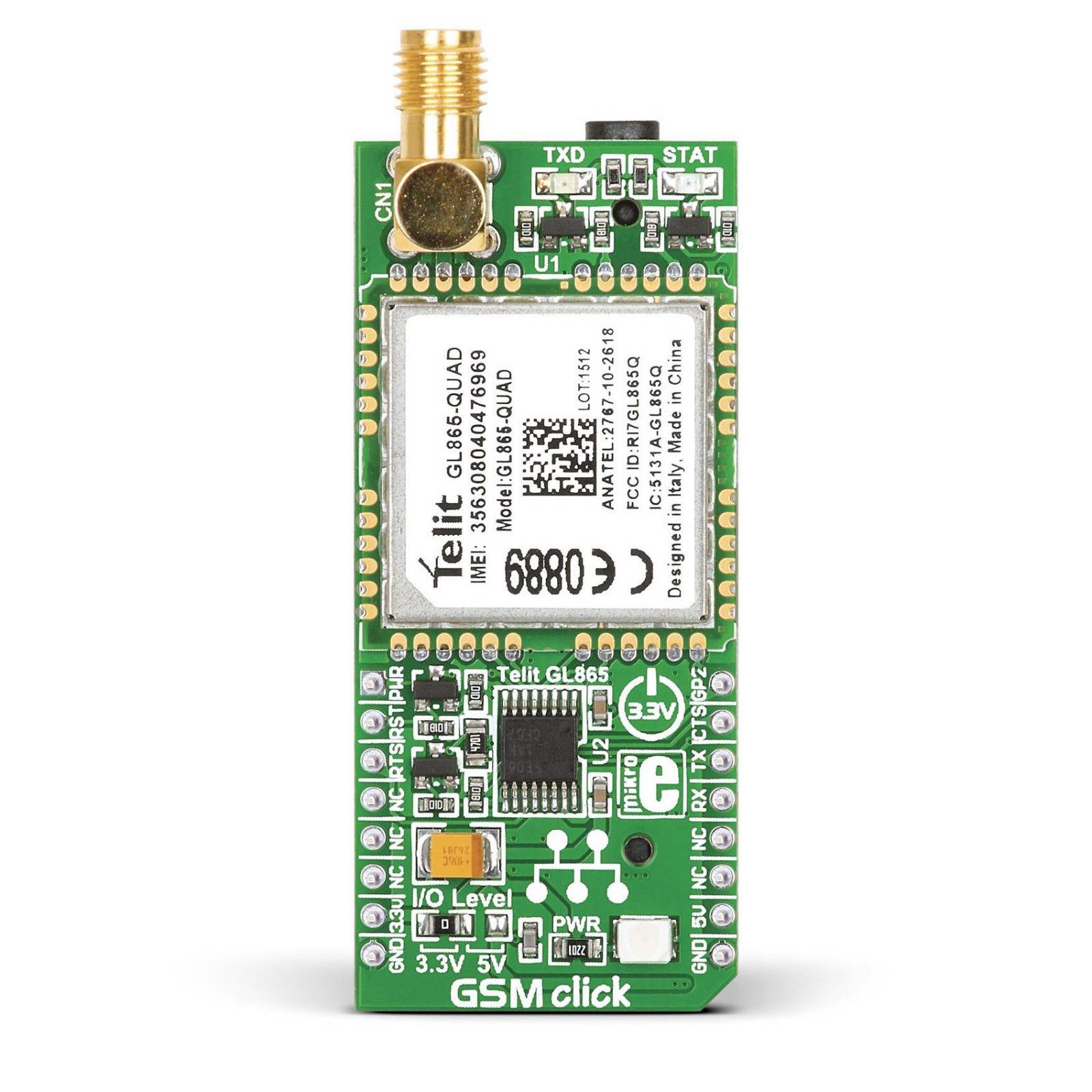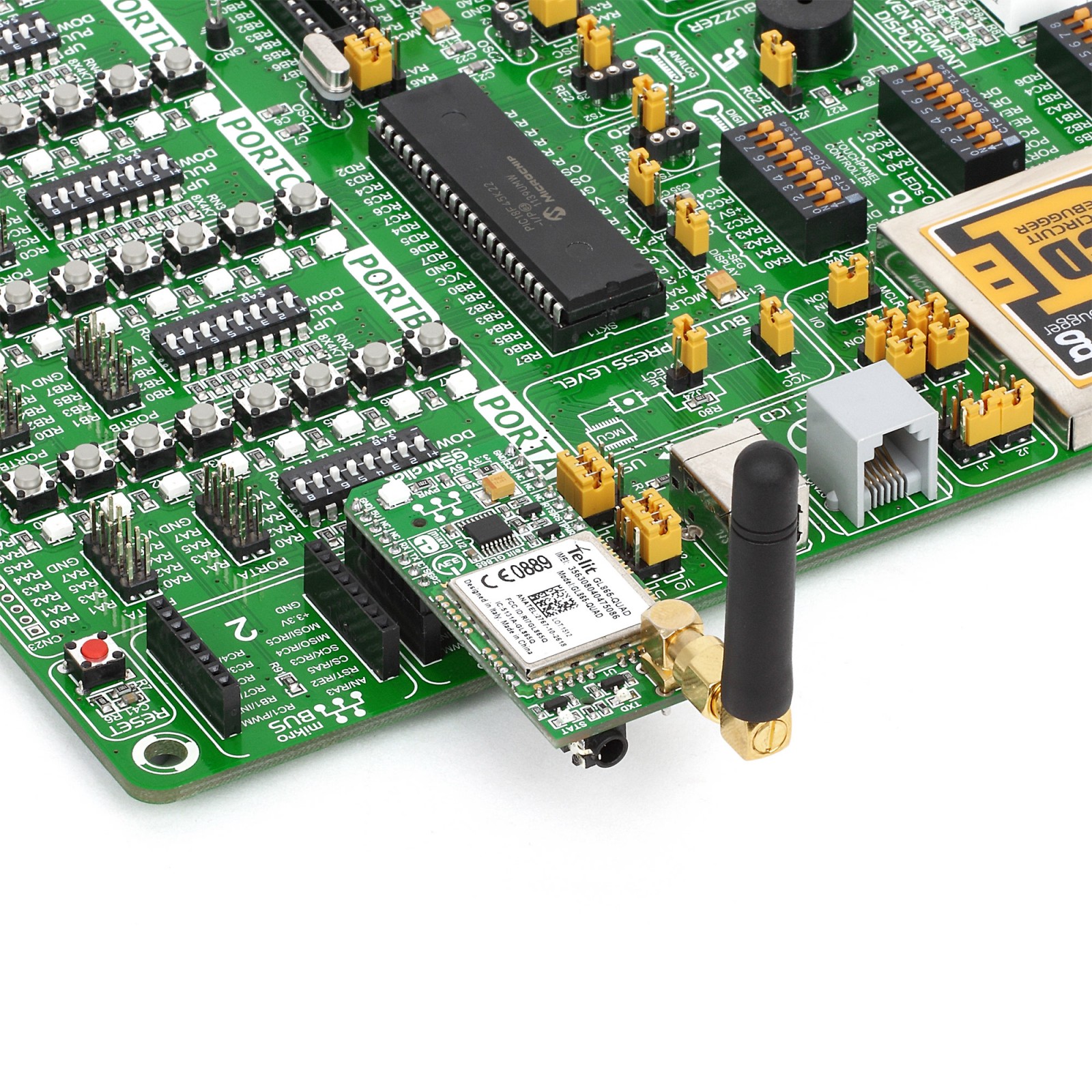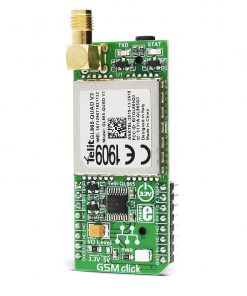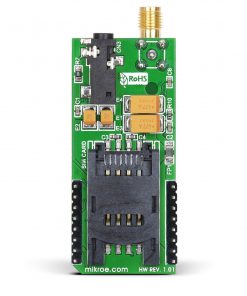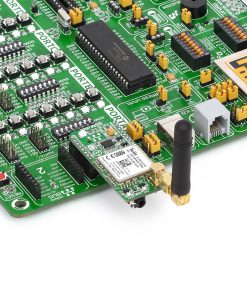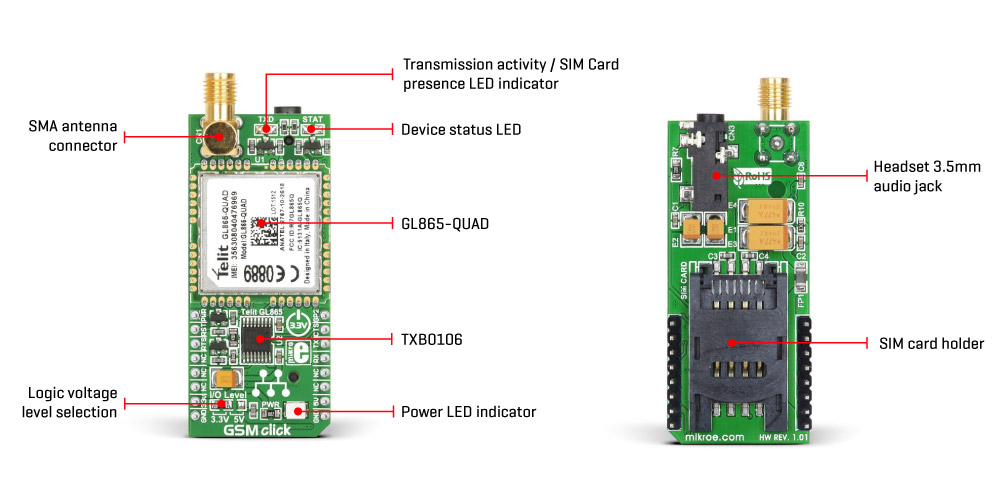Subtotal: R965.00
GSM Click
R1,050.00 ex. VAT
GSM Click is a compact add-on board that represents a compact GSM cellular network communication solution. This board features the GL865-QUAD, a GSM/GPRS embedded module from Telit Cinterion. This module features a full set of options for cellular networking and communication, such as the network status indication, jamming detection, embedded TCP/IP stack, including TCP, IP, UDP, SMTP, ICMP, and FTP protocols, full GPRS class 10 implementation; GSM supplementary functions such as the call barring, waiting, forwarding, and holding, calling line identification presentation or restriction (CLIP/CLIR), integrated voice communication codecs, and more. The module also features an embedded Python Script interpreter, allowing users to run scripts from inside the module. This Click board™ makes the perfect solution for the development of price-to-performance 2G cellular module M2M applications, such as utility metering and tracking systems.
GSM Click is fully compatible with the mikroBUS™ socket and can be used on any host system supporting the mikroBUS™ standard. It comes with the mikroSDK open-source libraries, offering unparalleled flexibility for evaluation and customization. What sets this Click board™ apart is the groundbreaking ClickID feature, enabling your host system to seamlessly and automatically detect and identify this add-on board.
Stock: Lead-time applicable.
| 5+ | R997.50 |
| 10+ | R945.00 |
| 15+ | R892.50 |
| 20+ | R858.90 |

 GSM2 Click
GSM2 Click 